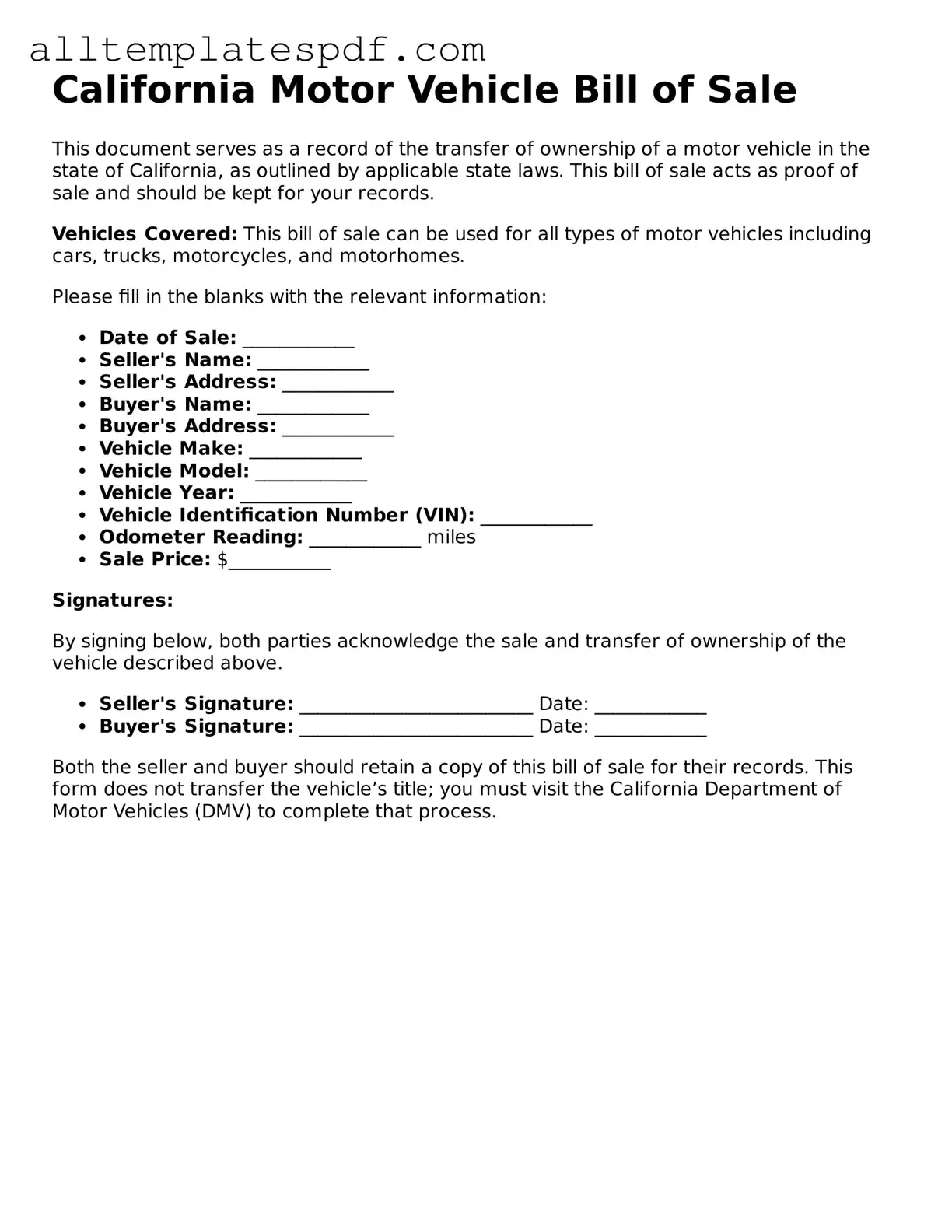Filling out the California Motor Vehicle Bill of Sale form can seem straightforward, but many people make common mistakes that can lead to complications later. One frequent error is not including all necessary information. Buyers and sellers must provide accurate details, such as the vehicle identification number (VIN), make, model, year, and odometer reading. Omitting any of these details can create confusion and may even invalidate the sale.
Another mistake often made is failing to sign the document. Both the buyer and seller must sign the Bill of Sale for it to be legally binding. Without signatures, the transaction may not be recognized by the Department of Motor Vehicles (DMV). It's essential to double-check that all required signatures are present before finalizing the sale.
Many people also neglect to date the form. The date of the transaction is crucial for record-keeping and may affect the registration process. When the date is missing, it can lead to disputes about when the sale took place, potentially complicating matters if any issues arise later.
Inaccurate pricing is another common pitfall. Sellers should ensure that the sale price reflects the actual amount agreed upon. If the price is misrepresented, it could raise questions during the title transfer process and may have tax implications for both parties.
Some individuals forget to provide a copy of the Bill of Sale to the buyer. This document serves as proof of the transaction and is essential for the buyer when registering the vehicle. Failing to provide this copy can lead to confusion and potential issues down the line.
Another mistake is not checking the form for errors before submission. Typos or incorrect information can cause delays in processing the title transfer. A careful review can save time and prevent unnecessary headaches.
It's also important to note that some people may overlook the need for additional documentation. Depending on the circumstances, buyers and sellers might need to provide extra paperwork, such as smog certificates or liens. Being aware of these requirements can help ensure a smooth transaction.
Finally, not understanding the implications of the Bill of Sale can lead to misunderstandings. This document is not just a receipt; it serves as a legal record of the sale. Buyers should be aware of their responsibilities regarding registration, while sellers should understand their obligations concerning the transfer of ownership. Knowledge is key to a successful transaction.
